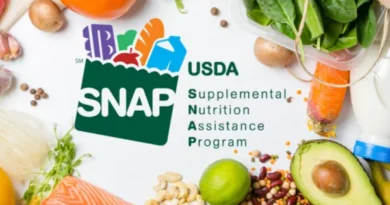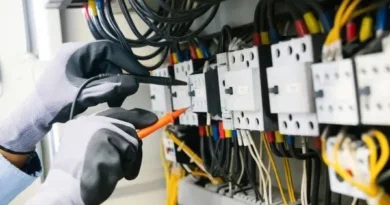Digital Driver License: The Practical Guide
Digital driver license explained for the U.S., with setup, where it works, limits, privacy, and the few official links you actually need.
Anúncios
Digital driver license: what it is and what it is not
A digital driver’s license is an official, state-issued version of your license stored securely on your phone.
It is not a photo or scan, but a cryptographically signed credential that your phone can present to approved readers.
It travels with you inside Apple Wallet or Google Wallet, and you authorize every share with Face ID, Touch ID, or a passcode.
It is best seen as a companion to your plastic card, because many agencies and businesses still require physical inspection.
It improves privacy by letting you share only what is needed, like “Over 21,” instead of your full address and ID number.
It reduces handoffs, since you tap your phone to a reader rather than passing a card back and forth.
It is governed by standards and state policies, so availability and acceptance can vary by jurisdiction and context.
It should be part of your toolkit for airports, age checks, and supported apps, not your only form of identification.

Digital driver’s license key takeaways
You are adding an official credential from your state or territory, not uploading an image of your card.
You approve every data share, and in most cases you can disclose only the fields a verifier requests.
You still carry a physical ID, because roadside stops and many in-person services are not ready for digital-only IDs.
You will see the most reliable acceptance at participating TSA checkpoints and within supported Wallet experiences.
You should keep your device locked with biometrics and a strong passcode, because your phone is now the key to your ID.
You benefit from revocation and updates, since issuers can refresh or disable a mobile credential if something changes.
How a digital driver license works behind the scenes
A digital driver’s license follows an international framework so phones and readers can talk in a secure, privacy-preserving way.
A reader sends a request for specific attributes, your phone shows you exactly what is being asked, and you choose to approve or deny.
After you consent, your phone creates an encrypted session and shares only the fields that match the request.
The verifier checks a digital signature from your issuing authority, confirming your credential is authentic and unaltered.
Because only the minimal data is disclosed, you reveal less information than you do with a plastic card.
Because your phone never leaves your hand, you reduce the risk of loss or accidental exposure during a check.
Because the standard is widely adopted, your experience gets more consistent as more agencies and businesses come on board.
Standards and security
The dominant protocol for presentation and verification is designed to enable selective disclosure and strong authentication.
The credential on your device is signed by the issuer, which prevents tampering and allows offline verification by capable readers.
Short-range communication keeps the exchange contained, and you see a consent screen before anything leaves your device.
Device-level protections like secure enclaves, hardware-backed keys, and biometrics create layered security around your ID.
Issuer policies add controls such as revocation, expiration checks, and re-verification after a name or address change.
Even with these protections, your personal hygiene matters, including updates, screen locks, and avoiding untrusted devices.
How to start
You add your digital driver’s license from the Apple Wallet app if your state supports ID in Wallet.
You tap the Add button, choose Driver’s License or State ID, pick your state, and follow the on-screen steps.
You scan your physical card, complete a liveness check with your camera, and submit your request for issuer approval.
You may receive approval quickly, or your state may take longer if manual review is required.
You can then present your ID at supported TSA lanes by tapping the reader and confirming with Face ID or Touch ID.
You still bring your plastic card to the airport in case a checkpoint or lane is not yet set up for digital IDs.
You revisit Wallet if you renew your license so your mobile credential stays in sync with your legal identity.
Digital driver license setup checklist for iPhone
You update iOS and the Wallet app to the latest version before you begin, which avoids most enrollment hiccups.
You confirm your state appears on Apple’s official list, since availability is state-by-state and can change over time.
You prepare your physical card and choose good lighting so the document and liveness checks pass on the first try.
You complete any issuer prompts for additional documentation, which some states require to validate identity remotely.
You test a presentation at a participating TSA checkpoint on a low-stakes trip to learn the flow without pressure.
You keep carrying a physical acceptable ID, because TSA strongly recommends having a backup to avoid delays.
How to get started on iPhone
You open Google Wallet and look for the option to add your U.S. driver’s license or state ID if your state supports it.
You follow prompts to scan the front and back of your card and record a short selfie video for liveness and match.
You submit the request, and your state verifies the information before issuing a digital credential to your device.
You can use your digital driver’s license at select TSA checkpoints and in supported apps that integrate with Wallet.
You remain in control during presentation, since Wallet shows you the exact attributes being requested before you share.
You still carry your physical ID in case a verifier only accepts a plastic card or a specific form factor.
You revisit Google Wallet to refresh your credential when your license renews or your personal data changes.
Android Setup Checklist
You install updates for Android and Google Wallet so your device has the latest security and feature support.
You check whether your state currently issues IDs to Google Wallet, because rollout is incremental and policy driven.
You take clear scans of your card and follow the liveness prompts carefully to reduce the risk of manual review.
You enable a device screen lock and biometrics, and you turn on Find My Device so you can remotely protect your phone.
You practice a test presentation at a participating TSA lane, observing the consent screen and the no-handoff process.
You keep a physical acceptable ID on you, because acceptance outside airports and select apps is still expanding.
Where you can use a license in the United States
You will find the most consistent acceptance at TSA security in airports that support digital ID lanes.
You may also see pilots or supported flows inside select apps that verify age or identity with Wallet instead of photos.
You might encounter limited acceptance at bars, retail counters, or government desks, because many policies still require plastic.
You should always check signage at the checkpoint and local rules for venues, since acceptance can vary by terminal and operator.
You should confirm law-enforcement policies in your state, because most roadside interactions still require a physical card.
You should plan a backup, especially when you are traveling on a tight schedule or visiting a new jurisdiction.
You will likely see adoption expand over time as standards mature and more agencies upgrade their verification systems.
Digital driver license at TSA checkpoints
You present your digital driver’s license by tapping your phone or watch at the TSA reader and approving the data request.
You never hand your device to the officer, because the system is designed for tap-to-present with your device in your control.
You look for signage indicating digital ID lanes, which may be limited to certain checkpoints, hours, or passenger programs.
You carry a physical acceptable ID as a backup, because TSA explicitly recommends that to minimize the chance of disruption.
You ensure your credential is REAL ID-compliant if you are relying on it for domestic flights under current federal rules.
You check official TSA guidance before travel, since participating locations and procedures are updated as new lanes come online.
Benefits of a digital driver license for everyday life
You move faster through supported airport lanes because verification is quick, private, and low-friction.
You protect your privacy by sharing only the attributes a verifier needs, not your whole card every time.
You avoid handing your phone or your card to others, which reduces wear and accidental loss during checks.
You simplify age-restricted app onboarding, since in-app verification can read a verified attribute from Wallet.
You keep your essentials in one place, combining boarding passes, payment cards, and ID on the same device.
You gain revocation and update controls, since issuers can refresh or disable credentials without reprinting plastic.
You build a habit of reviewing consent prompts, which helps you disclose less data across your daily life.
Digital driver license convenience examples
You verify “Over 21” in an app without revealing your full birthdate or your address line.
You breeze through a TSA PreCheck lane that supports digital ID and reduce handoffs during screening.
You check into a hotel with an app that requests only your name and age verification for pre-arrival.
You rent a car through a partner app that accepts Wallet ID, avoiding separate photo uploads at the counter.
You enter a venue piloting digital age checks, and staff see only the requested attribute rather than your full card.
You keep your plastic ID in a secure pocket while using your phone for the few contexts that already support digital.
Limits and risks
You treat your digital driver’s license as complementary, because many agencies and businesses still require the plastic card.
You plan around policy differences, since acceptance is agency-specific in the United States and can vary widely.
You remember that REAL ID rules apply to domestic flights and certain federal facilities, so compliance still matters.
You protect your device with a strong passcode, biometrics, and software updates to maintain the chain of trust.
You avoid unlocking and handing your phone to strangers, and you look for tap-to-reader experiences instead.
You prepare for offline moments, including a low battery or a damaged screen, by keeping your physical card with you.
You keep expectations realistic, because rollout timelines depend on states, standards, and verifier upgrades.
Digital driver license and privacy basics
You verify acceptance with the specific agency you plan to visit, since policies are not uniform across the country.
You carry a physical acceptable ID to reduce disruption risk, even when digital ID is supported in principle.
You read the share screen carefully and decline requests that ask for more data than the situation requires.
You rely on device biometrics and a long passcode so only you can authorize sharing from your Wallet.
You check your state DMV guidance on roadside stops, renewals, and what to carry in your vehicle.
You follow official TSA and issuer links for travel-critical decisions instead of relying on out-of-date blog lists.
Comparisons of a digital driver license with alternatives
You avoid relying on photos or scans of your license because they can be rejected and expose too much data.
You prefer Wallet presentations because verifiers can check the issuer’s signature rather than eyeballing an image.
You gain fine-grained control with selective disclosure, which is impossible with a static picture of your card.
You get revocation and update paths with a digital credential, while a leaked photo can circulate forever.
You keep the plastic card for the many interactions that still require physical inspection today.
You choose the right tool for each context, using digital at airports and supported apps, and plastic everywhere else.
Digital driver license vs photos and scans
You present only the necessary attribute, such as “Over 21,” instead of exposing your full identity every time.
You avoid emailing PDFs of your card, which over-share sensitive fields and create copies you cannot control.
You rely on cryptographic authenticity checks, which give verifiers confidence beyond what a screenshot can provide.
You can revoke or refresh your mobile credential, whereas removing a leaked image from the internet is nearly impossible.
You still carry plastic because universal acceptance for digital is not here yet, and you should avoid last-minute surprises.
You build a habit of minimizing data exposure, choosing verifiable and consent-based flows when they are available.
Common mistakes and how to avoid them
You might leave your wallet at home and discover a venue or agency does not accept digital IDs yet.
You could skip OS updates and lose access to Wallet or security patches right before a critical trip.
You might approve a broad data request without reading and share more information than the situation requires.
You could disable your screen lock and weaken the core protection around your mobile ID.
You might rely on old, third-party lists of supported states instead of your issuer’s current page.
You avoid these pitfalls by carrying plastic, keeping software current, and confirming acceptance on official pages.
You always carry a physical acceptable ID, because acceptance varies in the real world and backups prevent delays.
You check official TSA and issuer links before you travel, because participating lanes and states change over time.
You turn on biometrics and a long passcode, and you disable lock-screen previews to reduce shoulder-surfing.
You practice a presentation at a participating checkpoint on a low-stakes day to reduce stress on tight connections.
You revisit Wallet after a renewal so your mobile credential stays aligned with your legal identity.
You avoid handing your unlocked phone to anyone, using tap-to-present instead to maintain control.
Next steps with your digital driver license
You now understand what a digital driver’s license is, how it works, and where it fits in your daily life.
You can enroll on iPhone or Android if your state supports Wallet IDs and practice at a participating checkpoint.
You should carry your physical ID, protect your device, and review consent prompts to keep control of your data.
You can check authoritative pages for TSA rules, state availability, and step-by-step setup when you are ready.
You will be prepared for wider adoption as more agencies and businesses bring verifiable, privacy-preserving checks online.
You can bookmark the short list of essential links below and skip the noise elsewhere on the internet.
digital driver’s license next steps and official sources
You can review TSA’s Digital ID overview for where and how presentation works at security lanes, and you can confirm participating locations here: TSA Digital ID
You can confirm domestic flight requirements and timing for REAL ID enforcement here, and you can check acceptable identification for travel here: TSA REAL ID
You can verify whether your state supports ID in Wallet on iPhone and follow the official setup steps here: Apple — ID in Wallet
You can verify whether your state supports ID in Google Wallet on Android and follow the official setup steps here: Google Wallet Help — Add your ID
You can read the implementer perspective on mobile driver’s licenses from the national association that coordinates U.S. DMVs here: AAMVA — Mobile Driver License
You can find your state DMV’s site via the federal service directory if you need to check roadside or renewal rules here: USA.gov — Motor Vehicle Services
Transparency note
This is an informational guide and we do not represent TSA, Apple, Google, AAMVA, or any DMV, and policies can change without notice.
We may use affiliate links elsewhere on our site, but no affiliate links were included in this guide, and we never incentivize ad clicks.


